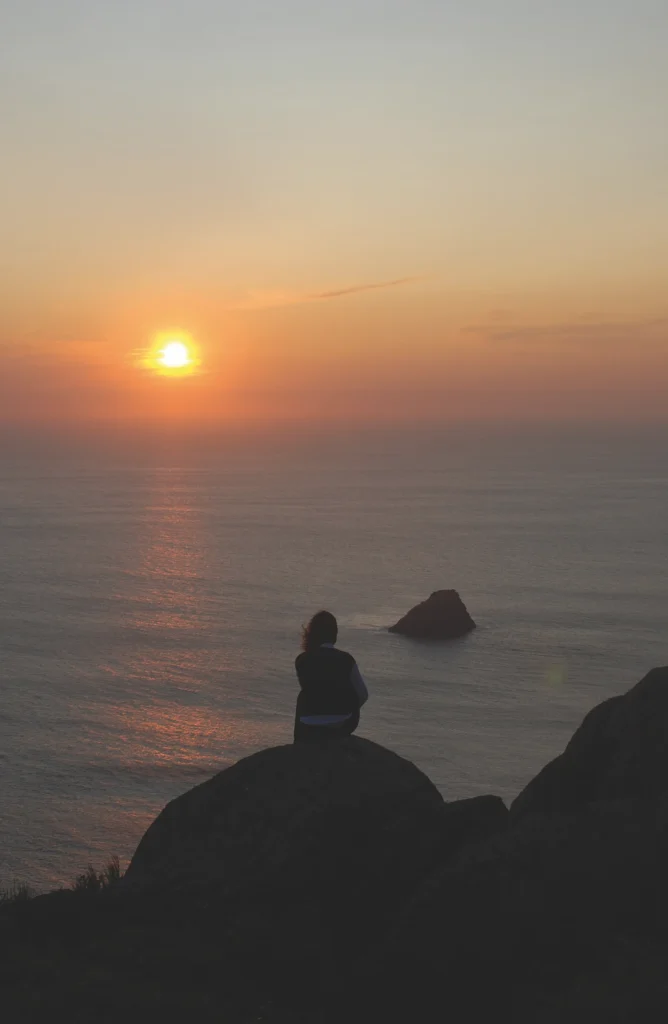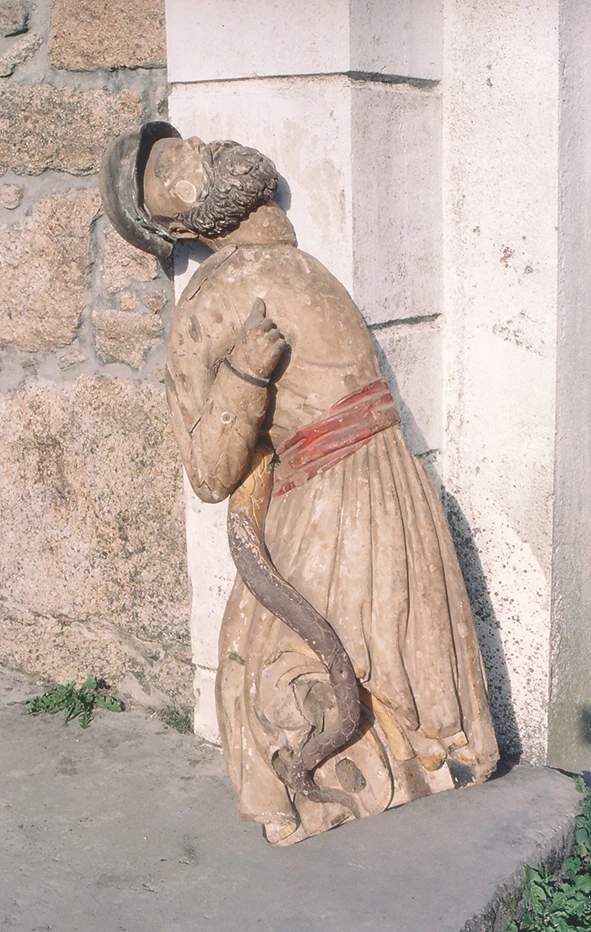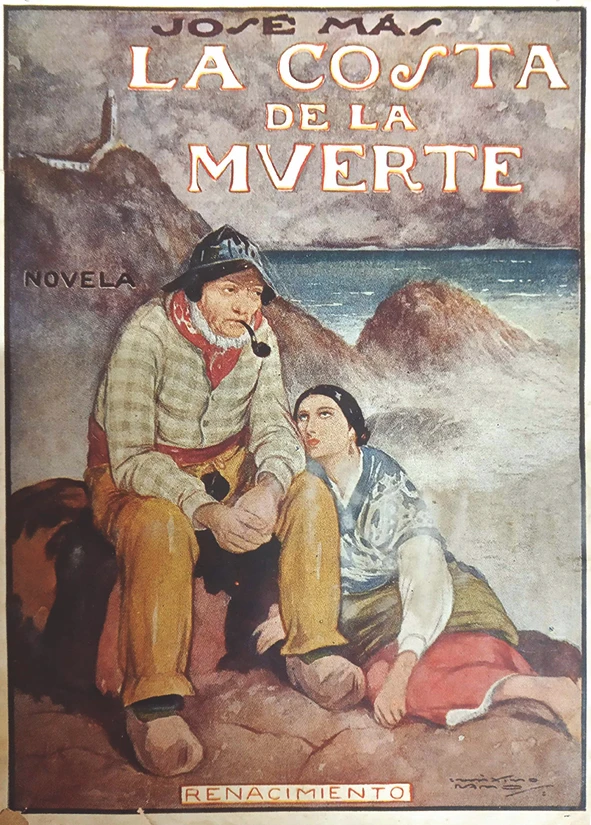
The place name now given to the westernmost coastal area of Galicia was first used in the late 19th century when this hazardous coastline witnessed major marine disasters near Cape Vilán

The first was the English freighter Iris Hull, in 1883, at the Baixo de Antón, near the Punta do Boi. Only one of the 38 crew members survived the wreck.
Seven years later, on 10 November 1890, the British cruiser H.M.S. Serpent, sailing from Plymouth to Sierra Leone, also ran up against Punta do Boi, causing the greatest marine tragedy in the region—only 3 of the 176 crewmen on board lived to tell the tale. This accident had a tremendous impact on England, partly because of the number of victims and because the crew members were naval personnel.
The British government harshly criticised the Spanish administration for the ineffective signalling of such a dangerous coastline: at that time the only working lighthouse in the area was the one at Vilán, an old low-grade lighthouse with very poor illumination that left a dark area of 21º produced by the summit of Vilán de Terra, including the greatly feared Punta do Boi.
Three years later, the British freighter Trinacria ran aground on 7 February 1893, nearby in Baixo de Lucín, to the west of the same area. Thirty of the thirty seven crew died.
These three tragedies happened in almost exactly the same place in just ten years, more than 200 people from the same country met their deaths. The events not only caused a major social and political furore in England, but also in Galicia and the rest of Spain.
Shortly after the fateful events of the late 19th c., this stretch of the coast started to be known by the macabre name of Costa da Morte (literally, “Death Coast”). No one knows if the new name was invented in England or in Galicia.
The first time it appeared in writing was on 14 January 1904, in a local newspaper published in A Coruña, El Noroeste. A section called “Maritime Accidents” with the title “Three shipwrecks” and the subheading “La Costa de la Muerte”, describes the sinking of the English collier, Kenmore, which ran aground opposite the beach of Traba de Laxe; the Dutch dredger Rosario, which sank in the bay of Santa Mariña and the Spanish schooner Francisco Rosa, which ran aground in the entrance to the port of Corcubión.
The month after the article was published, the same newspaper reported on the sinking of another English vessel, this time a steamship called Yeoman, at the sinister Pedra do Porto, at the entrance to the bay of Camelle. 4 of the 86-crew perished.
The newspapers reporting the tragedy used the place name “Costa de la Muerte”, which implies that the term was now in common use, especially when referring to the stretch of coast between Camelle and cabo Vilán. The newspapers that mentioned the name included some published in Madrid, such as El Heraldo de Madrid or El Imparcial. That same year the term “Costa Brava o de la Muerte” was used in a project to reform the General Beaconing Plan for the north-west coast of Spain.
In February 1904, Emilia Pardo Bazán, a writer from A Coruña, used the name in one of her articles published in the Catalan magazine La Ilustración Artística.
“In my region, there is a wild and savage coast that local people call Costa de la Muerte”.
The poet Eduardo Pondal was the first to write the name in Galician. It appears in one of his poems, which has not been precisely dated, but may have been written in the first years of the 20th century. Pondal gives an intensely negative feel to the name, doubtlessly influenced by the tragic setting of a place where maritime disasters were the order of the day, especially amongst British vessels, the ones that most frequently passed along this coastline.
The savage Briton, crossing the north, trembling with fear, exclaims from afar: “The coast of lamentations, the coast of death!”.
Eduardo Pondal
Soon after, the new name appeared in English. The first mention is made by the traveller and writer Annette Meakin, who recorded in her diary the name Coast of Death, which she apparently heard from local sailors. It later appears in print on several occasions in her book Galicia, the Switzerland of Spain, published in 1909. Meakin said that the name was already used by sailors in England because of the many accidents involving English vessels in this part of the Galician coast.
Another traveller and writer to use and disseminate the name Costa da Morte was the English writer Aubrey Fitz Gerald Bell (1881- 1950), a journalist, writer and translator. During his time as correspondent for the British newspaper Morning Post in Portugal, he travelled through Galicia and the rest of Spain, including Costa da Morte, which, according to him, extended from Vigo to Malpica.
“In the quiet roads to Fisterra, no mention is made of Costa da Morte, which is the name given to the Galician coast from Vigo to Malpica and the Sisargas Islands”. (Aubrey F. G. Bell, 1922).

The Andalusian writer, José Mas, also helped to disseminate the name with his novel La Costa de la Muerte, published in 1928. Much of the plot takes place in the port of Malpica, interspersed with scenes in other places such as Corme, Laxe, Camariñas, Muxía and Fisterra.
Unlike the other writers, Mas makes use of one of his characters, Adrián, to dispel some of the negative myths and legends surrounding Costa da Morte. Adrián also denies the accusation that local inhabitants deliberately caused the wrecks or cared little about the tragedies at sea. He puts the accidents down to natural weather conditions such as the frequent winter storms and fierce gales that lash this area of the coast, and to the lack of decent signalling systems such as lighthouses, and simple human error.
Mas set out to counteract the gloomy, macabre connotations transmitted by the place name and proposed another, Costa da Vida (literally, “Life Coast”), a much more positive term that was supported by many other writers such as Eugenio Carré Aldao, Francisco Ramón y Ballesteros and José Baña Heim.
However, the name to finally triumph was Costa da Morte, especially when it appeared in many publications of the late 20th century, when the region was becoming an increasingly popular tourist destination thanks to the many and varied natural, historical, cultural and gastronomic attractions it has to offer.
The negative image previously associated with the name suddenly became one of its major selling points, offering a very different image of Costa da Morte as somewhere mysterious and unique, a place of legend, which, when combined with its other attractions, has made this European “end of the world” one of the most visited areas in Galicia.